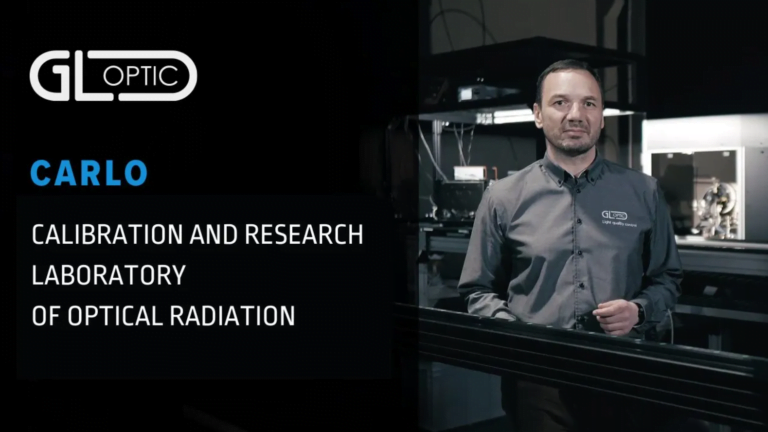The Calibration and Research Laboratory of Optical Radiation CARLO was established as part of the cooperation of the GL Optic team with partners from metrology institutes in Russia and Germany, as well as with the participation of national research centers. It is one of the most modern optical measurement laboratories in Central and Eastern Europe, subsidized by the European Regional Development Fund.
New directions in the development of optical measurements require the realisation of more and more complex measurement tasks. Precise measuring devices offered by GL Optic require advanced laboratory facilities equipped with the highest quality systems for calibration. These tasks are carried out by the Calibration and Research Laboratory of Optical Radiation CARLO.
In air-conditioned rooms, 8 measuring stations have been organised. They serve for transferring the optical standards, testing such parameters as detectors linearity, stray light of spectroradiometers, spectral response of detectors and wavelength calibration. Additionally, they are used for the calibration of spectroradiometers, radiometers and imaging luminance meters. Luminous flux and light intensity distribution, as well as radiant intensity distribution are also measured.
CARLO is the only laboratory in Central and Eastern Europe equipped with a Black Body Radiator, the primary standard source for implementation of spectral irradiance units. These types of reference standards can only be found in the leading National Metrology Institutes (NMI) in the world, such as NIST, PTB, NPL or VNIIOFI. High-temperature Black body Radiator produced by VNIIOFI achieves the emissivity not lower than 0.999. The radiator allows for working at temperatures up to 3200K, thanks to which it is possible to generate a useful level of optical radiation from 200 nm.
Watch Andrzej Rybczyński, the manager of the CARLO Laboratory modernization and equipment project at GL Optic, shows around our laboratory.
Want to find out how to organize modern photometric laboratory? Read our series:
Part 1: Selecting a goniometric system
Part 2: Selecting integrating sphere
Part 3: Introduction to luminance measuring devices
